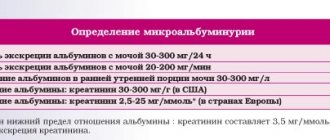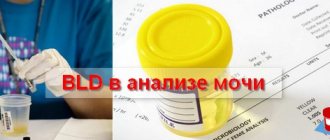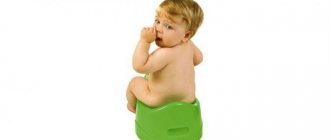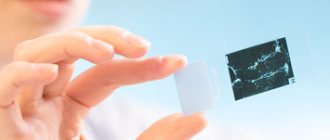| vendor code | Name | Price |
| 40-498 | Baseline biochemical parameters [06-003] Alanine aminotransferase (ALT) [06-010] Aspartate aminotransferase (AST) [06-015] Plasma glucose [06-021] Serum creatinine (with GFR determination) [06-034] Serum urea [06-035] Total protein in serum [06-036] Total bilirubin [06-048] Total cholesterol | 1750 |
| 06-001 | Beta-CrossLaps (bone resorption marker) | 1400 |
| 06-002 | N-Osteocalcin (bone remodeling marker) | 850 |
| 06-003 | Alanine aminotransferase (ALT) | 250 |
| 06-004 | Serum albumin | 300 |
| 06-005 | Serum total amylase | 320 |
| 06-006 | Pancreatic amylase | 360 |
| 06-007 | Antistreptolysin O | 460 |
| 06-008 | Apolipoprotein B | 560 |
| 06-009 | Apolipoprotein A 1 | 560 |
| 06-010 | Aspartate aminotransferase (AST) | 250 |
| 06-011 | Protein fractions in whey | 470 |
| 06-012 | Vitamin B12 (cyanocobalamin) | 800 |
| 06-013 | Gamma-glutamyl transpeptidase (gamma-GT) | 230 |
| 06-014 | Glycated hemoglobin (HbA1c) | 580 |
| 06-015 | Plasma glucose | 250 |
| 06-016 | Homocysteine | 1590 |
| 06-017 | Serum iron | 250 |
| 06-018 | Iron binding capacity of serum | 350 |
| 06-019 | Potassium, sodium, chlorine in serum | 350 |
| 06-020 | Serum calcium | 250 |
| 06-021 | Serum creatinine (with GFR determination) | 250 |
| 06-022 | Creatine kinase total | 350 |
| 06-023 | Creatine kinase MB | 450 |
| 06-024 | Lactate | 700 |
| 06-025 | Lactate dehydrogenase (LDH) total | 230 |
| 06-026 | Lactate dehydrogenase 1, 2 (LDH 1, 2 fractions) | 350 |
| 06-027 | Lipase | 390 |
| 06-028 | Cholesterol – High Density Lipoprotein (HDL) | 260 |
| 06-029 | Cholesterol - Low-density lipoprotein (LDL) | 270 |
| 06-031 | Serum magnesium | 290 |
| 06-033 | Serum uric acid | 240 |
| 06-034 | Urea in serum | 240 |
| 06-035 | Total protein in whey | 250 |
| 06-036 | Total bilirubin | 250 |
| 06-037 | Direct bilirubin | 250 |
| 06-038 | Total protein in urine | 200 |
| 06-039 | Serum C-peptide | 600 |
| 06-040 | Transferrin | 560 |
| 06-041 | Triglycerides | 260 |
| 06-042 | Ferritin | 660 |
| 06-043 | Vitamin B9 (folic acid) | 930 |
| 06-045 | Total alkaline phosphatase | 240 |
| 06-046 | Serum phosphorus | 240 |
| 06-047 | Fructosamine | 450 |
| 06-048 | Total cholesterol | 250 |
| 06-049 | Serum cholinesterase | 300 |
| 06-050 | C-reactive protein, quantitative (highly sensitive method) | 480 |
| 06-051 | Ionized calcium | 400 |
| 06-053 | Total amylase in daily urine | 290 |
| 06-054 | Calcium in daily urine | 250 |
| 06-055 | Magnesium in daily urine | 270 |
| 06-056 | Phosphorus in daily urine | 270 |
| 06-057 | Creatinine in daily urine | 250 |
| 06-058 | Urea in daily urine | 250 |
| 06-059 | Uric acid in daily urine | 250 |
| 06-060 | Total protein in liquor | 290 |
| 06-061 | Glucose in cerebrospinal fluid | 300 |
| 06-062 | Potassium, sodium, chlorine in daily urine | 350 |
| 06-064 | Serum potassium | 360 |
| 06-065 | Serum sodium | 360 |
| 06-066 | Chlorine in serum | 360 |
| 06-067 | Potassium in daily urine | 360 |
| 06-068 | Sodium in 24-hour urine | 360 |
| 06-069 | Chlorine in daily urine | 360 |
| 06-071 | Glucose tolerance test (extended) | 750 |
| 06-075 | Pyrilinks-D (bone resorption marker) | 1600 |
| 06-076 | Troponin I | 800 |
| 06-077 | Haptoglobin | 650 |
| 06-078 | Alpha 1-antitrypsin | 650 |
| 06-079 | Myoglobin | 1650 |
| 06-080 | Ceruloplasmin | 630 |
| 06-082 | Serum zinc | 900 |
| 06-083 | Serum copper | 800 |
| 06-084 | Serum lithium | 800 |
| 06-085 | Boron in serum | 800 |
| 06-086 | Aluminum in serum | 800 |
| 06-087 | Silicon in whey | 800 |
| 06-088 | Titanium in serum | 800 |
| 06-089 | Chromium in serum | 800 |
| 06-090 | Manganese in serum | 800 |
| 06-091 | Serum cobalt | 800 |
| 06-092 | Nickel in serum | 800 |
| 06-093 | Arsenic in serum | 800 |
| 06-094 | Selenium in serum | 900 |
| 06-095 | Molybdenum in serum | 800 |
| 06-096 | Cadmium in serum | 800 |
| 06-097 | Antimony in serum | 800 |
| 06-098 | Mercury in serum | 800 |
| 06-099 | Lead in whole blood | 800 |
| 06-101 | Vitamin A (retinol) | 2200 |
| 06-102 | Vitamin B1 (thiamine) | 2200 |
| 06-103 | Vitamin B5 (pantothenic acid) | 2200 |
| 06-104 | Vitamin B6 (pyridoxine) | 2200 |
| 06-105 | Vitamin C (ascorbic acid) | 2200 |
| 06-106 | Vitamin D, 25-hydroxy (calciferol) | 2250 |
| 06-107 | Vitamin E (tocopherol) | 2200 |
| 06-108 | Vitamin K (phylloquinone) | 2200 |
| 06-109 | Fat-soluble vitamins (A, D, E, K) | 7800 |
| 06-112 | Comprehensive blood test for omega-3 unsaturated fatty acids | 4650 |
| 06-114 | Albumin in urine (microalbuminuria) | 400 |
| 06-115 | Glucose in urine | 220 |
| 06-116 | Manganese in urine | 780 |
| 06-117 | Cobalt in urine | 780 |
| 06-118 | Nickel in urine | 780 |
| 06-119 | Arsenic in urine | 780 |
| 06-120 | Selenium in urine | 780 |
| 06-121 | Molybdenum in urine | 780 |
| 06-122 | Lithium in urine | 780 |
| 06-123 | Boron in urine | 780 |
| 06-124 | Aluminum in urine | 780 |
| 06-125 | Silicon in urine | 780 |
| 06-126 | Titanium in urine | 780 |
| 06-127 | Chromium in urine | 780 |
| 06-128 | Cadmium in urine | 780 |
| 06-129 | Antimony in urine | 780 |
| 06-130 | Mercury in urine | 780 |
| 06-131 | Lead in urine | 780 |
| 06-133 | Latent iron binding capacity of serum | 300 |
| 06-134 | C-peptide in daily urine | 600 |
| 06-135 | Zinc in urine | 780 |
| 06-136 | Copper in urine | 780 |
| 06-137 | Serum elastase | 3000 |
| 06-157 | NT-proBNP (quantitative) | 3200 |
| 06-178 | Lipoprotein (a) | 1000 |
| 06-179 | Bone matrix formation marker P1NP | 1700 |
| 06-180 | Total acid phosphatase | 300 |
| 06-182 | C-reactive protein, quantitative (method with normal sensitivity) | 480 |
| 06-183 | Coenzyme Q10 in the blood | 3600 |
| 06-184 | Reduced glutathione | 4620 |
| 06-185 | Malondialdehyde in the blood | 2600 |
| 06-186 | 8-OH-deoxyguanosine in the blood | 2600 |
| 06-187 | Beta carotene | 2150 |
| 06-188 | Water-soluble vitamins (B1, B5, B6, C) | 8500 |
| 06-189 | Histamine in the blood | 2400 |
| 06-190 | Urine test for L-carnitine (free and total) | 4000 |
| 06-191 | Diagnosis of metabolic disorders of purines and pyrimidines in urine | 9120 |
| 06-192 | Blood test for organic acids | 5800 |
| 06-193 | Urine analysis for organic acids | 4500 |
| 06-194 | Lithium in hair | 800 |
| 06-195 | Boron in hair | 800 |
| 06-196 | Sodium in hair | 800 |
| 06-197 | Magnesium in hair | 800 |
| 06-198 | Aluminum in hair | 800 |
| 06-199 | Silicon in hair | 800 |
| 06-200 | Potassium in hair | 800 |
| 06-201 | Calcium in hair | 800 |
| 06-202 | Titan in hair | 800 |
| 06-203 | Chrome in hair | 800 |
| 06-204 | Manganese in hair | 800 |
| 06-205 | Iron in hair | 800 |
| 06-206 | Cobalt in hair | 800 |
| 06-207 | Nickel in hair | 800 |
| 06-208 | Copper in hair | 800 |
| 06-209 | Zinc in hair | 800 |
| 06-210 | Arsenic in hair | 800 |
| 06-211 | Selenium in hair | 800 |
| 06-212 | Molybdenum in hair | 800 |
| 06-213 | Cadmium in hair | 800 |
| 06-214 | Antimony in hair | 800 |
| 06-215 | Mercury in hair | 800 |
| 06-216 | Lead in hair | 800 |
| 06-217 | Vitamin B2 (riboflavin) | 2150 |
| 06-218 | Vitamin B3 (niacin) | 2150 |
| 06-219 | Comprehensive blood test for vitamins D (D2 and D3) | 5700 |
| 06-220 | Determination of omega-3 index | 5360 |
| 06-221 | Comprehensive blood test for omega-6 unsaturated fatty acids | 4640 |
| 06-222 | Comprehensive blood test for unsaturated fatty acids of the omega-3 and omega-6 families | 8950 |
| 06-223 | Fatty acid analysis | 4400 |
| 06-224 | Advanced urine analysis for organic acids (46 indicators) | 12750 |
| 06-225 | Blood test for amino acids (32 indicators) | 5200 |
| 06-226 | Urine analysis for amino acids (32 indicators) | 7800 |
| 06-227 | Iron in urine | 780 |
| 06-228 | Advanced comprehensive analysis for vitamins (A, beta-carotene, D, E, K, C, B1, B2, B3, B5, B6, B9, B12) | 35850 |
| 06-229 | Comprehensive analysis for B vitamins (B1, B2, B3, B5, B6, B9, B12) | 12400 |
| 06-230 | Comprehensive analysis for vitamins (A, D, E, K, C, B1, B5, B6) | 15500 |
| 06-231 | Toxic trace elements (Cd, Hg, Pb) | 2900 |
| 06-232 | Toxic trace elements and heavy metals (Hg, Cd, As, Li, Pb, Al) | 3300 |
| 06-233 | Basic essential (vital) and toxic microelements (13 indicators) | 4800 |
| 06-234 | Comprehensive analysis for the presence of heavy metals and trace elements (23 indicators) | 4650 |
| 06-235 | Expanded comprehensive analysis for the presence of heavy metals and trace elements (40 indicators) | 6550 |
| 06-236 | Determination of transferrin fraction (CDT) (diagnosis of alcohol abuse) | 3000 |
| 06-237 | Diagnosis of metabolic disorders of purines and pyrimidines in the blood | 6080 |
| 06-238 | Asymmetric dimethylarginine | 4500 |
| 06-240 | Vitamin D metabolites (25-hydroxycholecalciferol and 1,25-dihydroxycholecalciferol) | 5200 |
| 06-241 | Vitamins and microelements involved in the regulation of the immune system (Fe, Cu, Zn, Cr, Mn, Se, Mg, Hg, Ni, Co, Li, vitamins C, E, A, B9, B12, B5, B6, D) | 30000 |
| 06-242 | Vitamins and microelements involved in the regulation of the antioxidant system (Fe, Cu, Zn, Se, S, Co, Mn, Mg, vitamins A, C, E, K, B2, B5, B6, omega-3, omega-6 fatty acids ) | 35000 |
| 06-243 | Vitamins and microelements involved in the regulation of the liver detoxification system (Fe, Mg, Mo, Zn, S, vitamins A, C, B1, B3, B5, B6, B9, B12) | 25000 |
| 06-244 | Vitamins and microelements that affect the condition of the skin, nails, hair (K, Na, Ca, Mg, Fe, Cu, Zn, S, P, vitamins A, C, E, B1, B2, B3, B5, B6, B9, B12) | 30000 |
| 06-245 | Vitamins and microelements that affect the condition of the skeletal system (K, Ca, Mg, Si, S, P, Fe, Cu, Zn, vitamins K, D, B9, B12) | 12360 |
| 06-246 | Vitamins and microelements that affect the state of the muscular system (K, Na, Ca, Mg, Zn, Mn, vitamins B1, B5) | 9000 |
| 06-247 | Vitamins and microelements that affect the condition of the female reproductive system (Fe, Cu, Zn, Se, Ni, Co, Mn, Mg, Cr, Pb, As, Cd, Hg, vitamins A, C, E, omega-3, omega- 6 fatty acids) | 25800 |
| 06-248 | Vitamins and microelements that affect the condition of the male reproductive system (Se, Zn, Mn, Ni, Cr, Fe, Co, vitamins A, C, B9, B12) | 11700 |
| 06-249 | Vitamins and microelements that affect the state of the cardiovascular system (K, Na, Ca, Mg, P, Fe, Zn, Mn, Cu, vitamins B1, B5, E, B9, B12) | 28500 |
| 06-250 | Vitamins and microelements involved in the regulation of pancreatic function and carbohydrate metabolism (Cr, K, Mn, Mg, Cu, Zn, Ni, vitamins A, B6) | 8100 |
| 06-251 | Vitamins and microelements involved in the regulation of thyroid function (I, Se, Mg, Cu, vitamin B6) | 6300 |
| 06-252 | Vitamins and microelements that affect the state of the nervous system (Ca, Mg, Cu, P, vitamins E, B1, B5, B6, C) | 30720 |
| 06-253 | Vitamins and microelements involved in the regulation of the excretory system (K, Na, Ca, Mg, vitamins B6, D) | 8850 |
| 06-254 | Vitamins and microelements that affect the condition of the gastrointestinal tract (K, Mg, Fe, Zn, vitamins K, D, B1, B5) | 14550 |
| 06-255 | Vitamins and microelements involved in the regulation of the hematopoietic system (Fe, Ca, Mg, Co, Cu, Zn, Mo, vitamins B9, B12, K, B6, B5, D, E, omega-3, omega-6 fatty acids) | 33120 |
| 06-256 | Alpha-2-macroglobulin | 1340 |
| 06-258 | Glucose tolerance test (standard) | 300 |
| 06-259 | Glucose tolerance test during pregnancy | 800 |
| 06-260 | Blood glucose tolerance test with C-peptide | 1550 |
| 06-261 | Procalcitonin | 4120 |
| 06-262 | Superoxide dismutase | 3070 |
| 06-263 | Cystatin C | 2000 |
| 06-264 | Extended comprehensive blood test for vitamin D metabolites (1,25-OH D3, 25-OH D3, 25-OH D2, 24,25-OH D3) | 11120 |
| 06-265 | Iodine in serum | 950 |
| 06-266 | Glucose tolerance test with insulin in the blood | 1440 |
| 06-267 | Biochemical analysis of stool | 3300 |
Urine analysis based on biochemical parameters is necessary to identify diseases of the genitourinary system: pyelonephritis, cystitis, prostatitis, urethral diseases, chronic renal failure, nephrotic syndrome, etc.
Biochemical urine analysis essentially performs a monitor function, which characterizes the effectiveness of symptomatic treatment, and the indicators of this analysis, those. deviations from the norm reflect the condition of the kidneys, pyelocaliceal system and other related organs and systems.
This type of analysis is most often prescribed by urologists. Specialists in other areas may prescribe analysis for an extended study of the patient’s health status.
Our clinic constantly hosts promotions
Preparatory stage
Before taking the test, certain preparation is necessary, which includes avoiding drinking alcohol, avoiding stressful situations and physical activity. It is recommended to refrain from eating foods that cause urine coloration. It is advisable to minimize the amount of sweet, fatty and spicy foods.
If you are taking medications, you must inform your doctor about this, since some drugs distort the final results.
You should avoid sexual intercourse 3 days before the procedure. Women are prohibited from donating urine during menstruation.
How to properly collect urine for biochemical research
For biochemical analysis, urine collected in the morning on an empty stomach is required. Such a study is usually done in conjunction with a biochemical blood test.
Before collecting urine for such an analysis, you must avoid eating spicy and fatty foods, sweets and alcoholic beverages. You should also not eat foods that can turn your urine a different color. These include: beets, blueberries, asparagus and rhubarb. At the same time, the amount of fluid consumed should be left unchanged.
Content:
- How to properly collect urine for biochemical research
- Interpretation of biochemical urine test
- Additional indicators in biochemical urine analysis
- Summing up
Approximately twenty-four hours before the test, it is necessary to stop using antibacterial drugs or uroseptics, and the attending physician must be notified about what medications or vitamin complexes the patient is using. Otherwise, the analysis may give incorrect results, which will consequently affect the diagnosis and lead to incorrect treatment.
Women need to remember that it is not recommended to take such a test during menstrual flow, and if the attending physician still prescribes it, then they should use a hygienic tampon.
It is imperative to observe personal intimate hygiene when collecting urine for biochemical research. To do this, do not use antibacterial agents or disinfectants. Regular soap and warm water are best.
Urine collection must be carried out in a sterile disposable container, which can be freely purchased at any pharmacy. If you don’t have such a container at hand, you should take a clean glass jar. It must be thoroughly washed with clean hot water and then rinsed with boiling water. You should also make sure that the lid fits tightly to the jar and the contents will not spill during transportation.

If the doctor orders a Rehberg test, then urine must be collected within 24 hours. The last collection should take place exactly twenty-four hours after the first. Urine collected in this way should be stored in a cool, dark room. A refrigerator is good for this.
Rules for taking the analysis
The collection of biomaterial is carried out at home throughout the day, starting in the early morning. Urine is collected in special containers.
When collecting urine, you need to adhere to certain rules:
- Only a sterile container is used;
- the first morning urine is not collected;
- Before each urination, the genitals should be washed;
- no more than a day should pass between visiting the toilet and sending the biomaterial to the laboratory;
- All collected urine should be stored in the refrigerator.
When the daily urine is collected, it is combined, the volume is analyzed and about 50 ml is poured into a special container for analysis, which is often called a container. The jar indicates the total volume of urine and the patient’s parameters (in some cases, age is also written). After completing these manipulations, the collected material is sent to the laboratory.
You need to understand that only by correctly collecting the biomaterial will you be able to obtain reliable results.
The average price for a test in Moscow is 300 rubles (about the same price for a blood test). It is important to choose a good clinic for research, where professionals work and equipped laboratories are available.
When do you give urine for biochemistry?
Biochemical urine analysis (BAM) is an informative diagnostic study that determines the functional state of the urinary, hepatobiliary, and endocrine systems. Prescribed for:
- preventive examination;
- control of diuretic treatment;
- diagnosis of diseases of the genitourinary system;
- management of pregnancy;
- suspicion of hidden inflammation in the body.
The results of the analysis are interpreted by doctors of different specializations. The BAM data is deciphered most accurately by a therapist, urologist, nephrologist, obstetrician-gynecologist, pediatrician.
The process of deciphering the results
After the test, the patient is given a report indicating the amount of chemicals in the urine. Most often, the transcript is presented in the form of a table that includes three columns. The first contains the name of the indicator, the second contains the value in the patient’s urine, and the third contains the norm. Having studied the data present in the transcript, the doctor draws conclusions regarding the violations present and makes a definite diagnosis.
It is noted that the range of normal values varies depending on the hospital and laboratory in which the material was studied; this is not considered an error. Only the doctor can make a conclusion regarding whether the value is considered beyond the normal range.
What the analysis shows
Urine is a biological fluid, the composition of which depends on the correct functioning of the kidneys, liver, and endocrine system organs. Based on the results of biochemical analysis, the following are diagnosed:
- urolithiasis (urolithiasis);
- pyelonephritis;
- kidney failure;
- glomerulonephritis;
- nephrolithiasis;
- toxicosis of pregnant women;
- dehydration;
- diabetes;
- electrolyte imbalance;
- liver pathologies;
- hyperfunction of the parathyroid glands.

In urine biochemistry, more than 30 different indicators are determined. Depending on the symptoms, the doctor prescribes the study of only individual organic and inorganic substances.
Considered indicators
A biochemical study of urine shows about 15 values, but only some of them play an important role:
- Urea. The normal value ranges from 333 to 587 mmol per day. Reduced levels indicate the presence of liver and kidney diseases. There are other explanations: vegetarianism, the recovery stage after acquired injuries, the active growth of the child. Elevated values are present during pregnancy (this is also not considered normal in pregnant women) as a result of excessive protein intake. In addition, exceeding the norm is a sign of diseases such as hepatitis, diabetes, inflammation in the urinary tract and other viral pathologies.
- Creatinine. The normal value for men is from 7.4 to 17.6 mmol/day, for women – from 5.5 to 15.9 mmol/day. Higher rates are deciphered as the presence in the body of problems with the functioning of the pituitary gland and thyroid gland, observed in diabetes mellitus. In addition, increased levels are typical with frequent consumption of protein foods or with frequent and intense physical activity. Reduced indicators are present in the presence of leukemia, serious disorders in the functioning of the kidneys and anemia.
- Uric acid. Exceeding the norm reflects the presence of a pathology such as gout. Reduced levels are observed in case of problems with metabolism or in case of poor kidney function.
- Microelements. This value includes several items: potassium, sodium, chlorine, calcium. In the case of an increase or decrease in potassium content, it makes sense to talk about disturbances in the functioning of the kidneys. Inconsistency of sodium with the norm indicates the presence of diabetes mellitus, pathology of the kidneys and adrenal glands. Elevated chlorine levels indicate a lack of fluid in the body, reduced values are a sign of problems with the kidneys and adrenal glands. Elevated calcium levels are a sign of osteoporosis; a decreased value indicates oncology, renal failure and rickets.
- Squirrels. Increased rates are caused by diabetes, HIV, allergies and various types of infections.
- Oxalates. The normal value does not exceed 40 mg per day. Increased levels in the absence of quality therapy provoke the formation of kidney stones. This clinical picture is also observed in diabetes mellitus.
In addition, the indicators of phosphorus, amylase and urate are studied.
With a correct assessment of the results of a biochemical analysis of urine, cancer can be detected in the early stages, thereby saving the patient’s life. That is why today, much more often, doctors have begun to recommend that patients undergo a biochemical urine test.
Indicators of biochemical urine analysis
When conducting urine biochemistry, the following is determined:
- Daily amount of urine excreted.
- Total density of urine.
- Potassium level (the presence of this element in the urine indicates a hormonal imbalance in the patient’s body).
- Calcium level (based on its amount, it can be assumed that the patient has endocrine diseases or dysfunction of the adrenal glands).
- Sodium level - an increased level of this element indicates improper functioning of the kidneys.
- Total protein in the urine - its presence signals an inflammatory process.
- Ketone bodies are a sign of impaired urine acidity.
What affects the accuracy of the results
Before collecting urine for biochemical analysis, you need to eliminate all factors that affect the result. The accuracy of the resulting data depends on:
- on the correct preparation and collection of biomaterial;
- compliance with urine storage rules;
- taking medications.
You should temporarily refuse to take the test if:
- recurrence of colds;
- menstruation;
- hypertensive crisis.

It is advisable to carry out BAM before instrumental examination - cystoscopy, ultrasound of the kidneys, radiography.
Approximate prices for analysis in Moscow
Urine biochemistry is a set of microscopic tests that is used to assess general health. The cost of the procedure depends on the type of analysis and the number of indicators determined:
| Type of analysis | Cost in rubles |
| alpha amylase | 50-1403 |
| nephrological complex | 300-2800 |
| glucose (daily urine) | 70-1403 |
| urobilin | 65-630 |
| calcium | 50-1403 |
| microalbumin | 85-2310 |
| oxalates | 150-3500 |
| creatinine | 70-1403 |
| sodium | 100-1620 |
BAM is an informative laboratory test that reflects the correct functioning of the urinary, hepatobiliary and endocrine systems. Based on the results of the analysis, the performance of individual organs (kidneys, pancreas, liver) and metabolic disorders are assessed.
How to properly collect daily urine for analysis
At the initial appointment, the doctor tells the patient how to submit daily urine for analysis. Proper preparation and collection of biomaterial prevents false-positive or false-negative results. Preparations begin 2 days before going to the clinic.
Rules for preparing for biochemical analysis:
- 2 days before urine collection, stop taking medications;
- fatty foods and alcohol are excluded from the diet;
- limit physical and psycho-emotional stress;
- refuse to visit the solarium and bathhouse;
- collection of biomaterial is carried out before endourethral procedures (ultrasound, catheterization, smear);
- maintain normal drinking regime;
- exclude foods that stain urine (carrots, beets, wild berries).
When planning an examination, you must tell your doctor what medications you take regularly or have taken within the last month. Biochemistry results are influenced by:
- metronidazole;
- herbal remedies with bearberry;
- loop diuretics;
- sulfonamides;
- hormonal contraceptives;
- aspirin;
- sulfazole;
- vitamin and mineral complexes.
If a daily urine sample is used for analysis, any travel on that day should be postponed. A change in environment and diet will lead to changes in the biochemical composition of urine, which will affect the test results.
Rules for collecting daily urine:
- Container for biomaterial. To collect liquid, use sterile plastic containers with airtight lids. Their volume must be at least 2.5 liters.
- Recording the time of fluid collection. Urine is collected 24 hours in advance. If the first portion was collected at 8-00 in the morning, then the last portion is collected at the same time the next day.
- Hygiene procedures. Before collecting urine, the genitals are washed with neutral soap.
- Collection of liquid. You should urinate in a dry and sterile small container. The container should not touch the skin, as this will cause epidermal cells to enter the liquid. A single portion is poured into a large container with a volume of 2.5-3 liters, closed with a lid and sent to the refrigerator.

The container with biomaterial is stored on the bottom shelf of the refrigerator to prevent sedimentation. On the day of the test, the urine is shaken in a common container. No more than 200 ml of liquid is poured into a separate container with a sealed lid and sent to the laboratory.








